November 18, 2022
Half-king, half-lion: the one and only Great Sphinx of Giza!
Egypt, continued…
I mentioned in my previous post how I don’t really go in for the far-fetched and fantastically mystical theories as to how aliens the Egyptians managed to build such magnificent colossuses so long ago. I think it was simply a matter of a lot of hard physical labor by a lot of slaves paid locals over a long time, assisted of course by rudimentary but crucial engineering tools and devices like pulleys and ramps – not to mention ropes, plus of course horses and camels.
I wonder why there are all these different theories regarding how the Pyramids were constructed, yet hardly any for other pyramids around the world – in the ancient Maya city of Coba or the Pyramid of the Sun (both in what is today Mexico), for example. Maybe it’s simply because those others are so much smaller in size? Or take Macchu Pichu. It too was constructed with massive blocks of stone, and way up in the mountains (no easy feat), yet still – no “conspiracy theories”!
I think the outlandish theories about the Pyramids stem from their being so XXL, so OTT-extravagant, and constructed such a long, long time ago. Folks simply built them? Surely not!
I personally think the Egyptians were to a large extent simply lucky. They had lots of well-nourished manpower that could be sourced from the fertile lands along the Nile, and they had plenty of free time on their hands: there was no one to go to war with, so… they built pyramids! Sphinxes too…
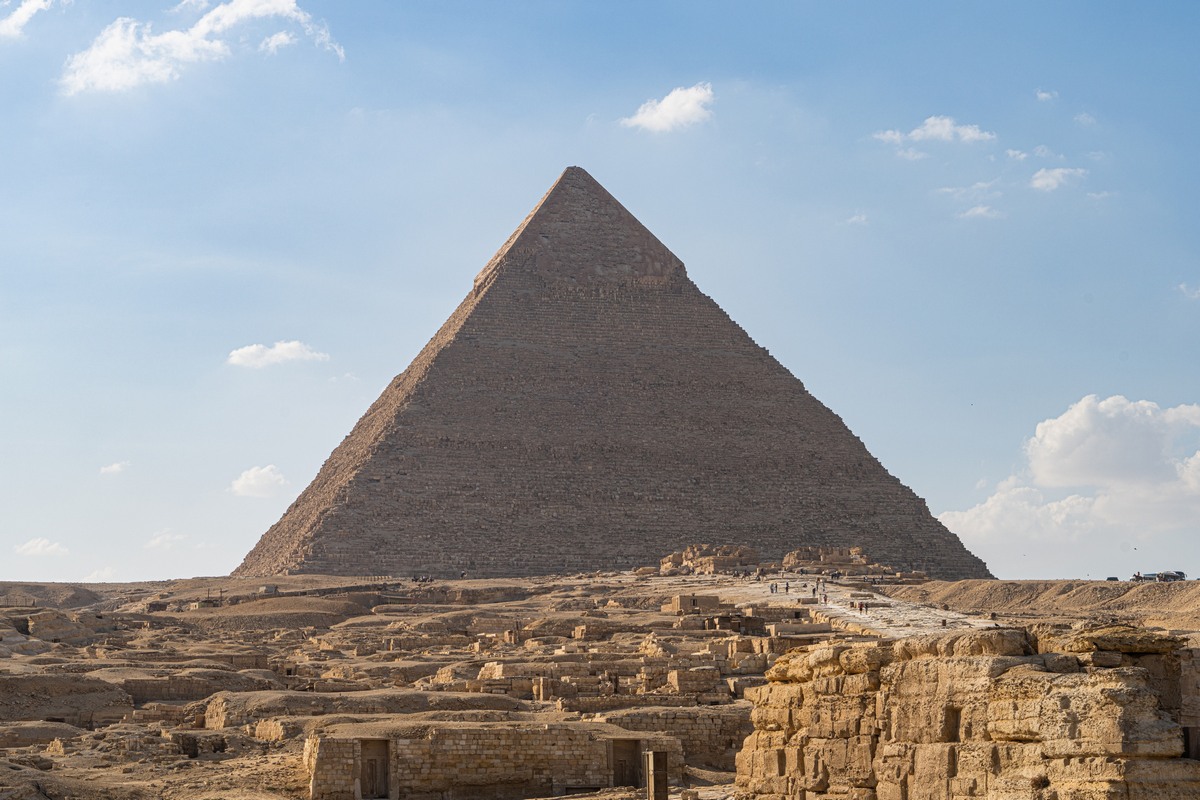
So there you have it folks – my version of the Pyramids’ provenance! (As I always say though – I’m no historian. If there are any among you, dear readers – let me know your theories (in the comments)!) But as regards the genesis of the Great Sphinx of Giza, I – like everyone else, it seems – am much less categorical regarding its origins – at least the timing thereof…
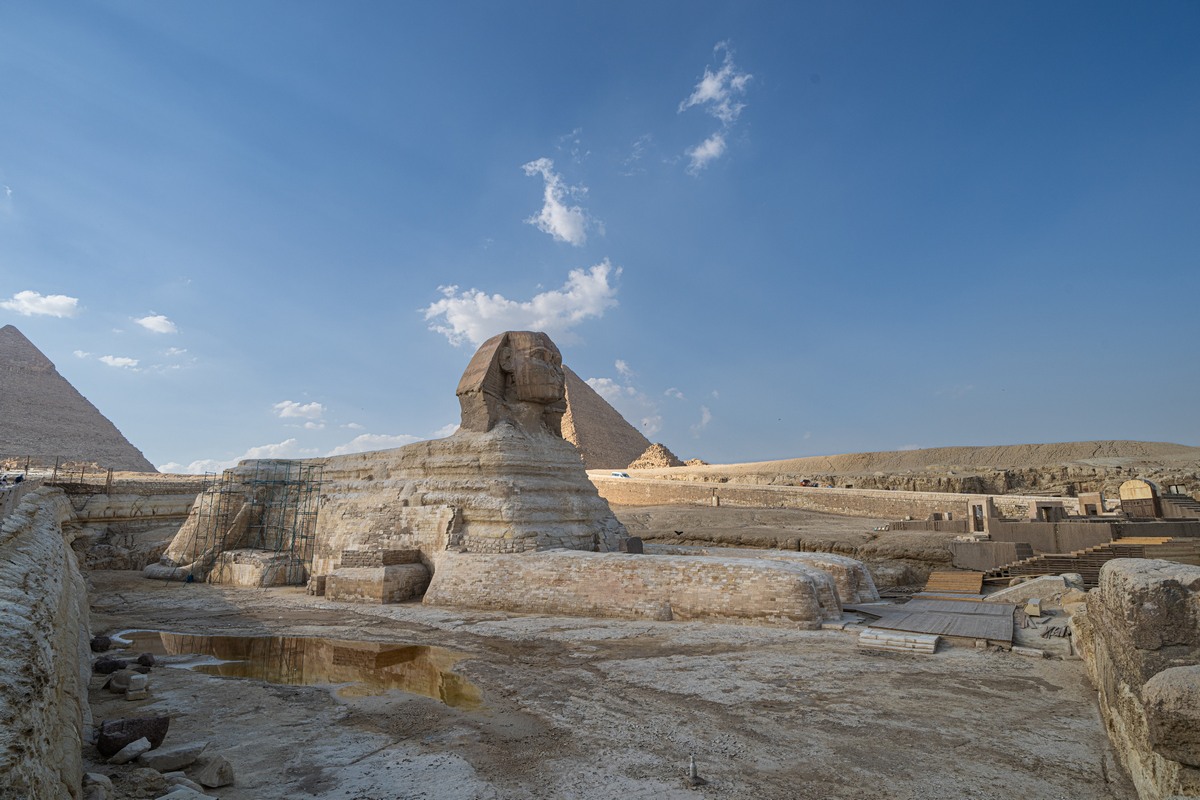
It seems no one really knows for sure just how old the Sphinx is. One Egyptologist reckons it was constructed around the same time as the Pyramids, while others think it was several thousand (!) years earlier. No one disputes that it was a very long time ago though. The erosion on the feline body attests to that:
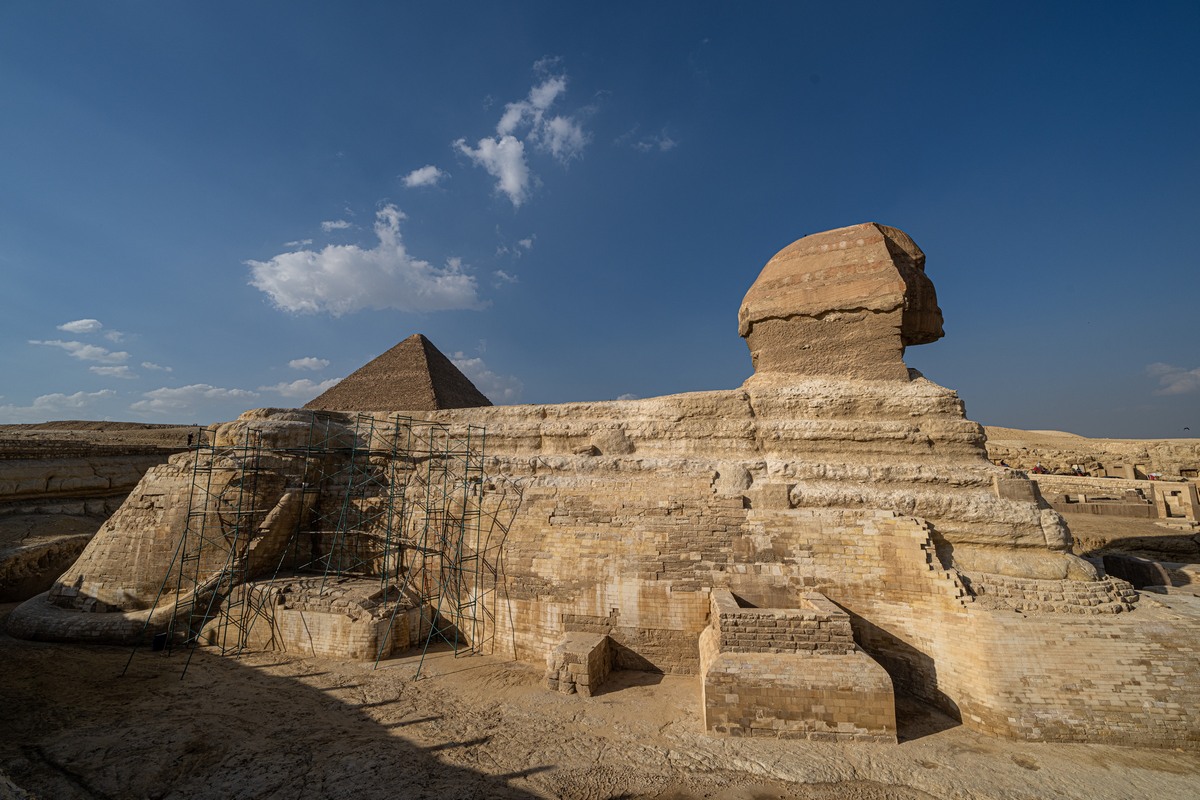
It seems to me that Ancient Egyptian sphinxes all share certain redeeming features: shoulders, front and rear paws, tail flopped over its back from the right, and a proud, forward-looking (sat) posture:
If you compare the Great Sphinx with the above two pics, you can tell just how much of its original sculpture is missing. The body is thoroughly eroded too. Yes, the poor Sphinx has suffered a lot more at the hands of the elements than the Pyramids have. This must be, at least in part, due to the fact that the Pyramids were for a long time covered by a protective layer of much sturdier granite bricks; meanwhile the Sphinx was for a similarly long time buried up to its shoulders in sand (would this worsen or lessen the erosion? I’m not sure).
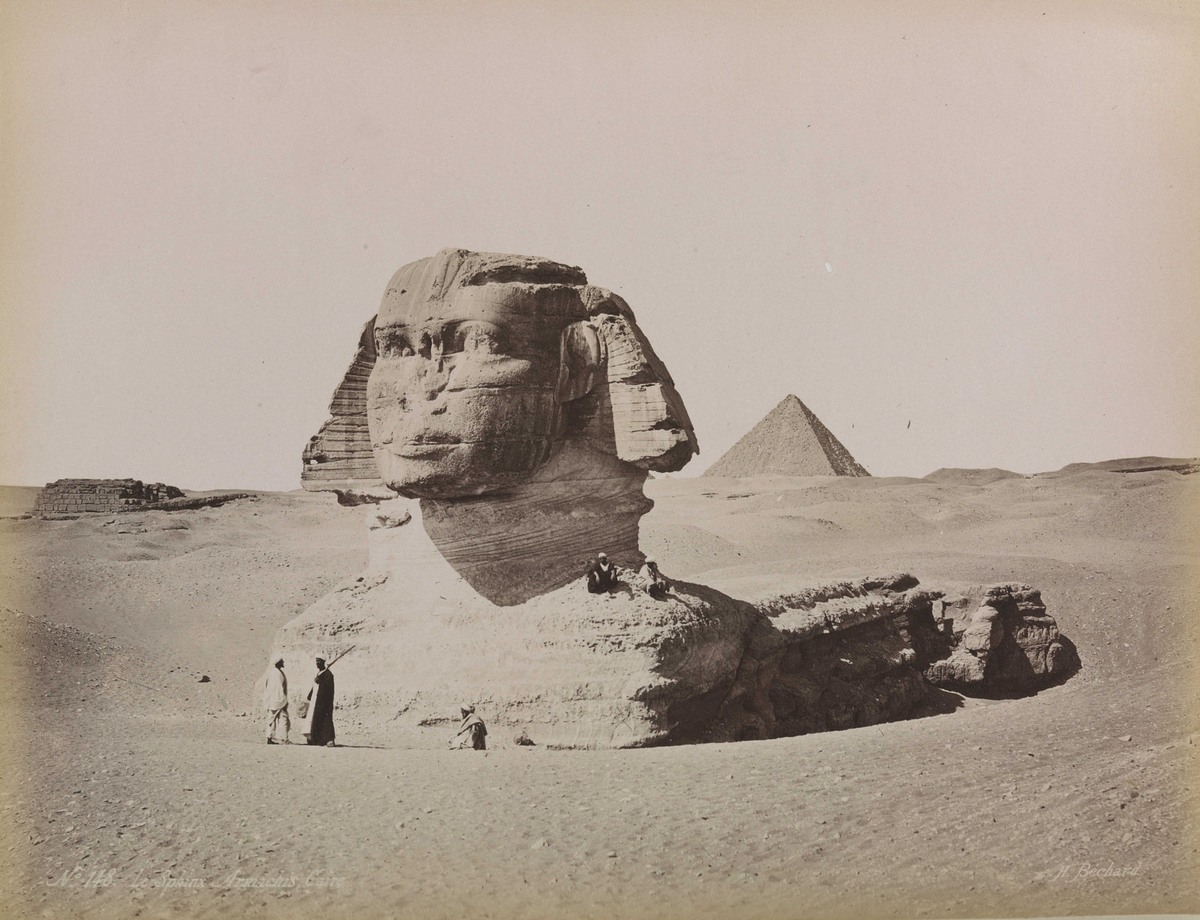 [These photos aren’t mine; they’ve been honestly lifted from Google]
[These photos aren’t mine; they’ve been honestly lifted from Google]
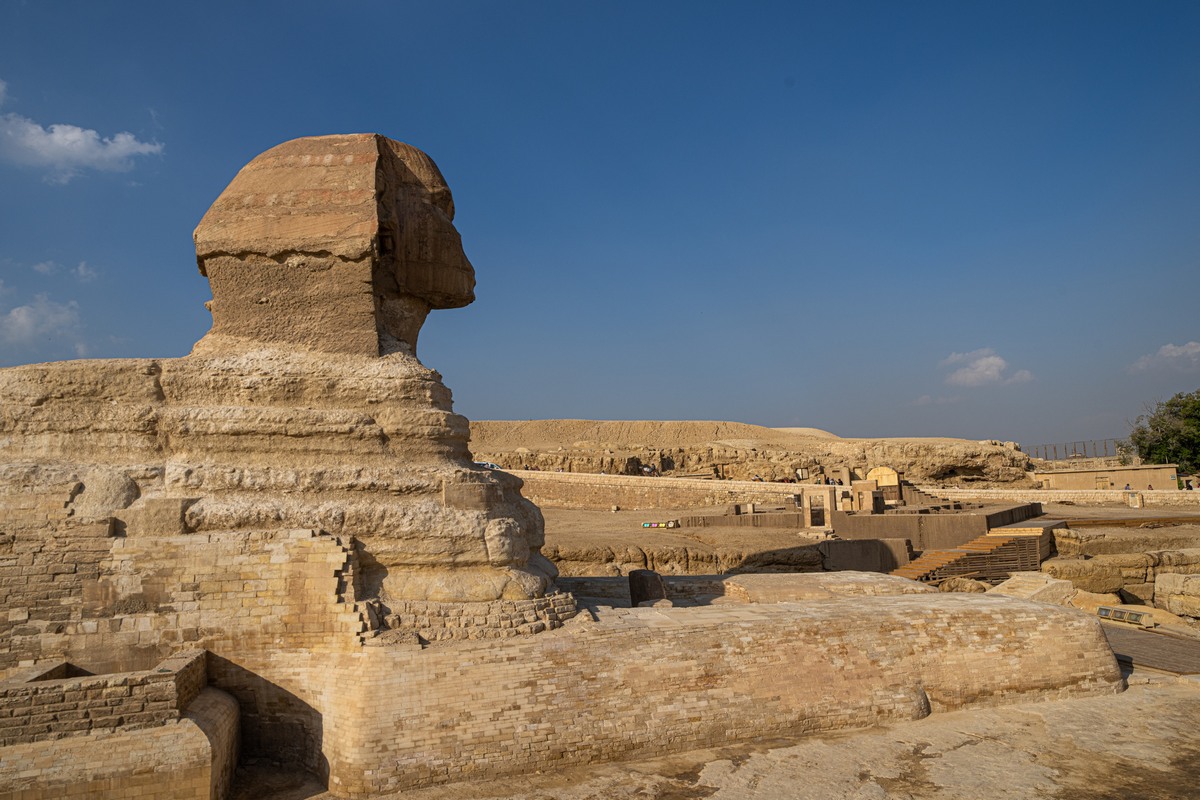
Alas, some of the ancient wrinkles are just too old and deep to be botoxed back to youth. Still, they are doing a good job at plastic surgery restoring some of what must have been the original form:

Btw, there are more granite blocks to be seen down here by the Sphinx – just like those at the base of the Pyramid of Menkaure. They make up the lowest (and only remaining) outer layer of the structures around the Sphinx – which are the temples of Khafre, in the below photo. Just in front of those blocks, according to our guide, is the former quayside to where they shipped in the blocks from the quarry:
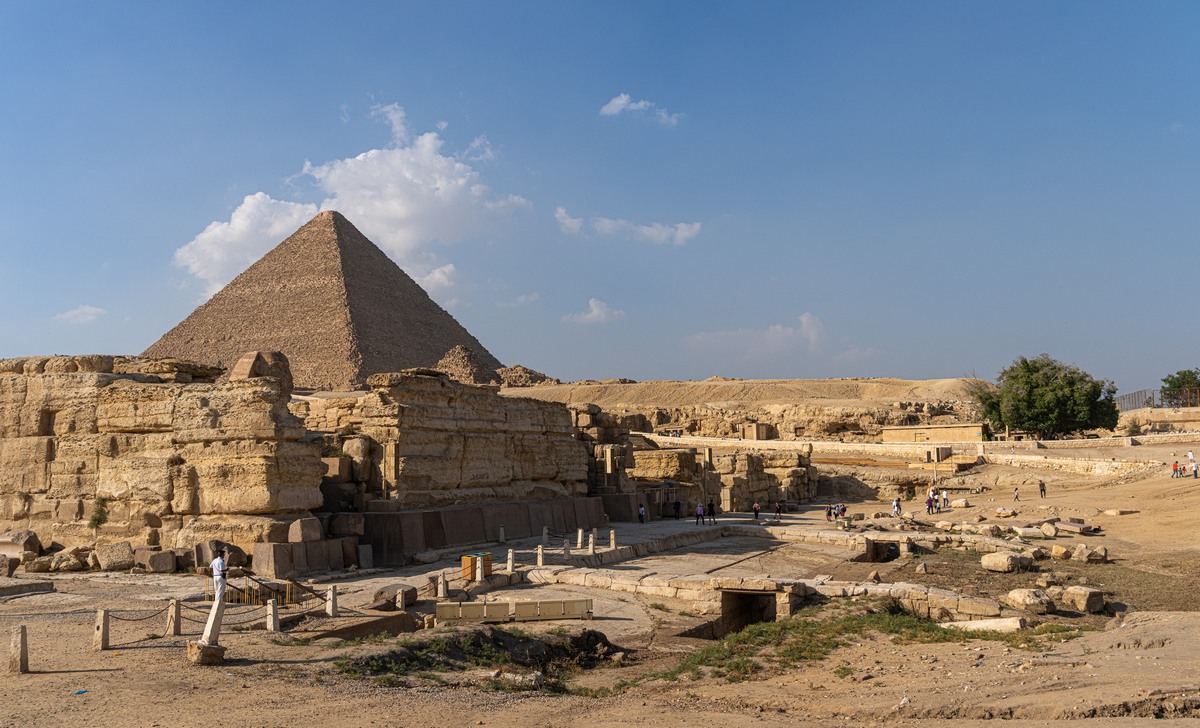
That means that the Nile (or one of its branches) was around eight kilometers to the west of where it is today; at least – if what our guide told us is correct. The internet begs to differ: it states that a canal ran from the Nile to here. Either story does still show how water was exploited effectively in the construction of the Pyramids, temples, Sphinx…
Inside one of the temples by the Sphinx:
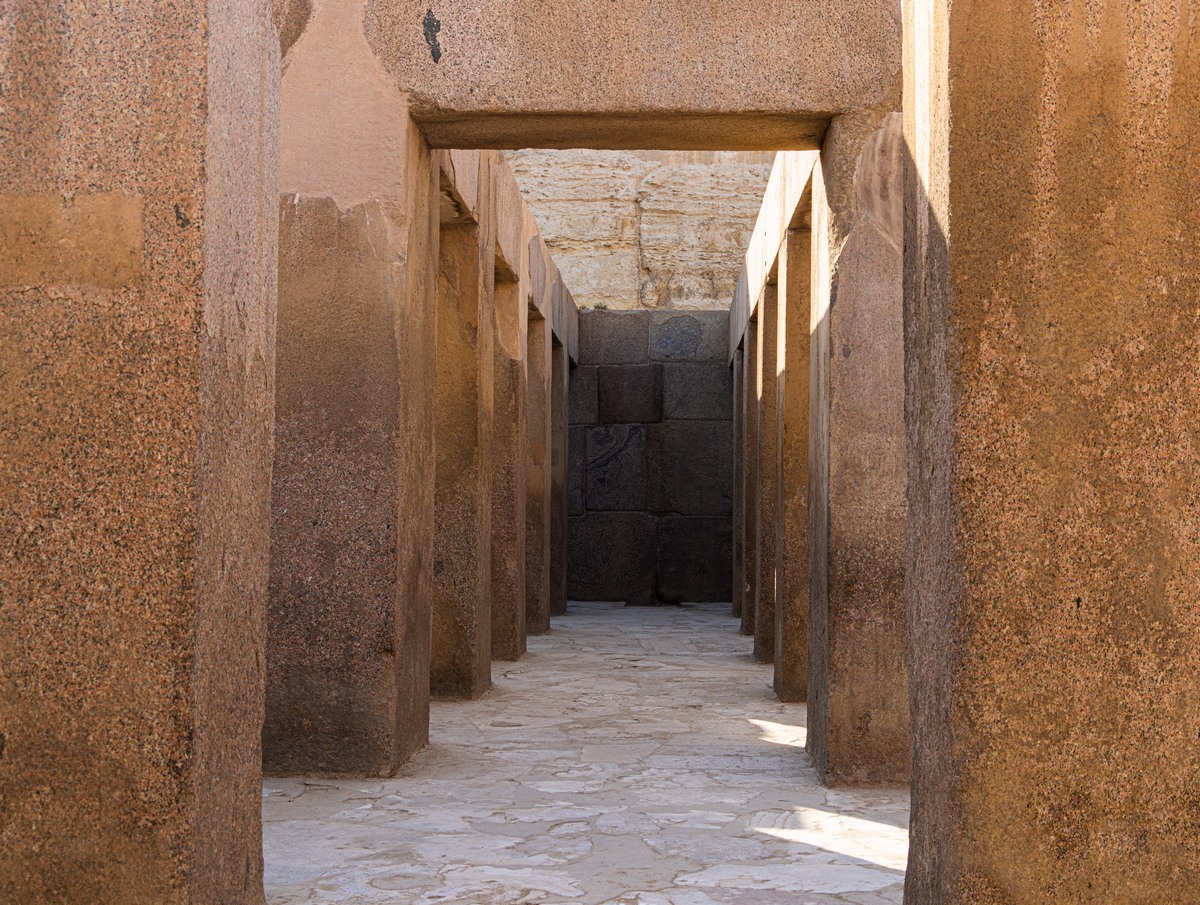
Looking good, going strong. Granite saves the day temple:
And the granite blocks weren’t just piled one upon another willy-nilly; check this out! ->

Woah – 90-degree corner stone! I saw one just like it at Machu Picchu! Coincidence?…
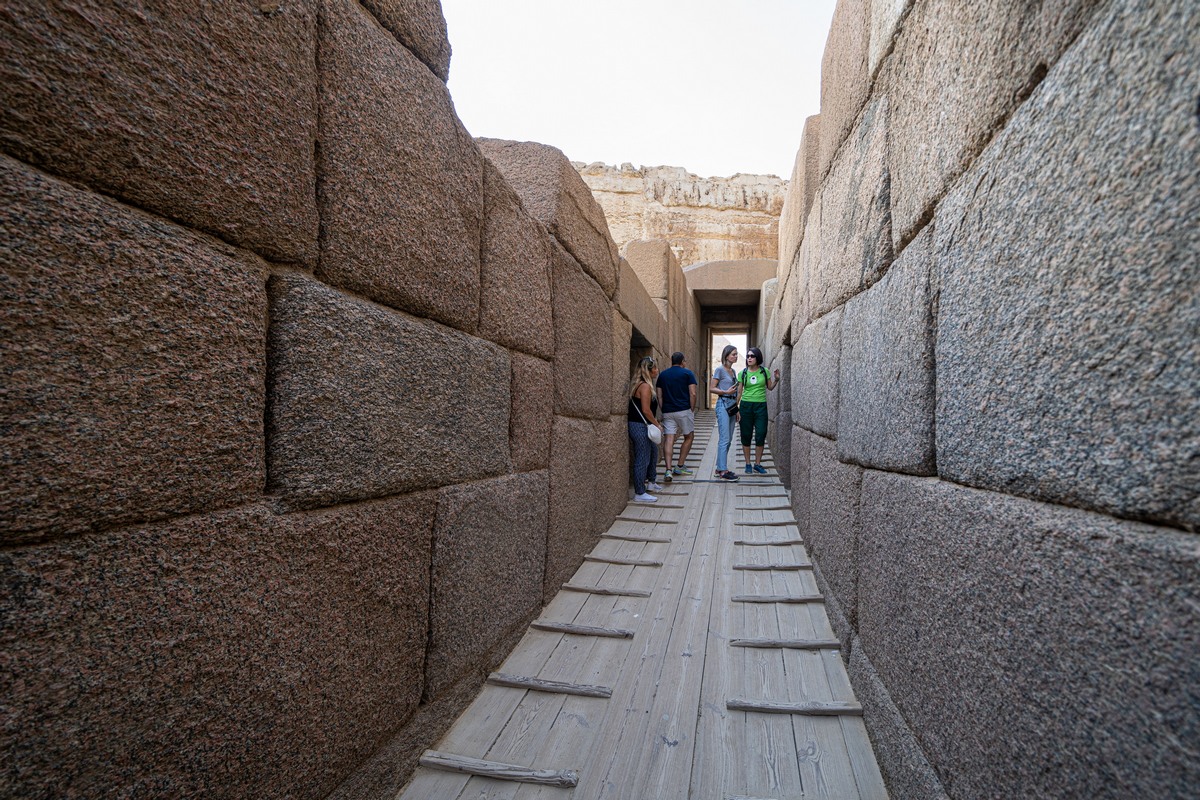
That’s your lot for today folks. More from Egypt – coming right up!…






